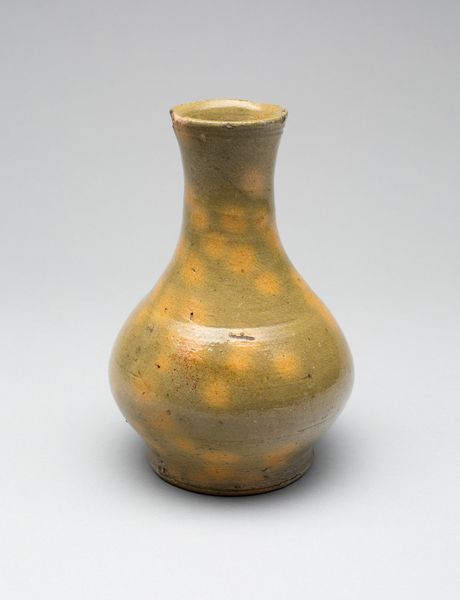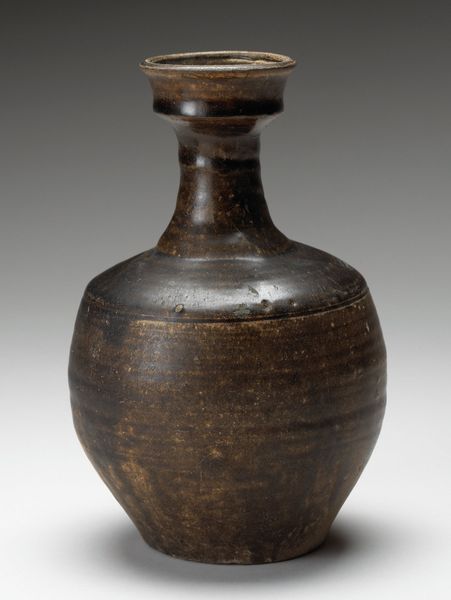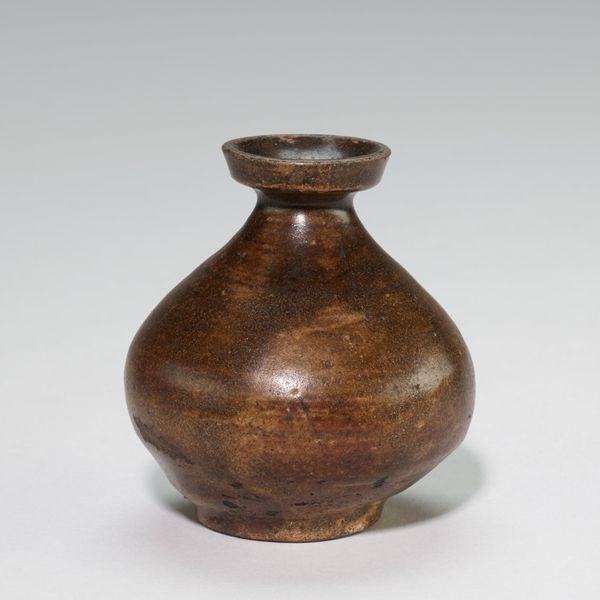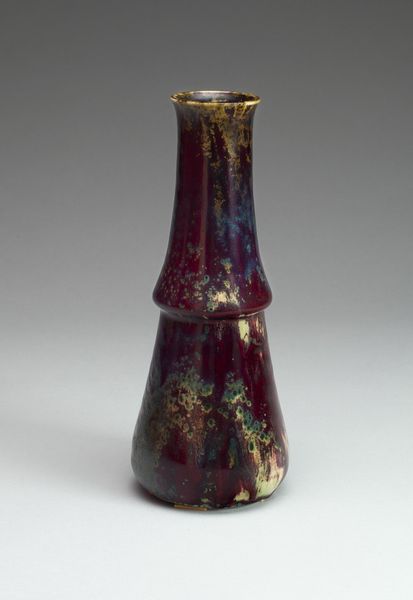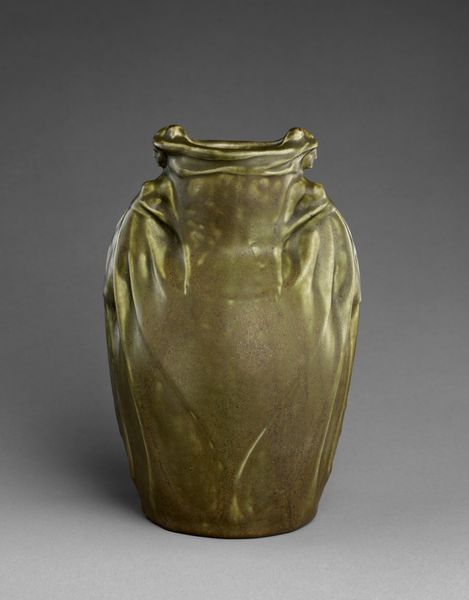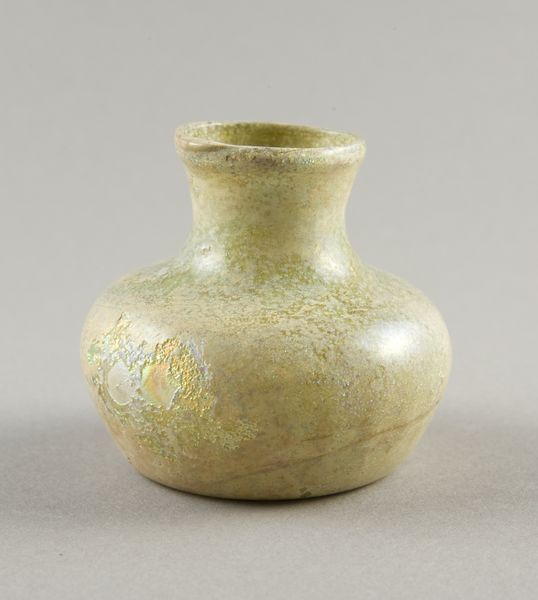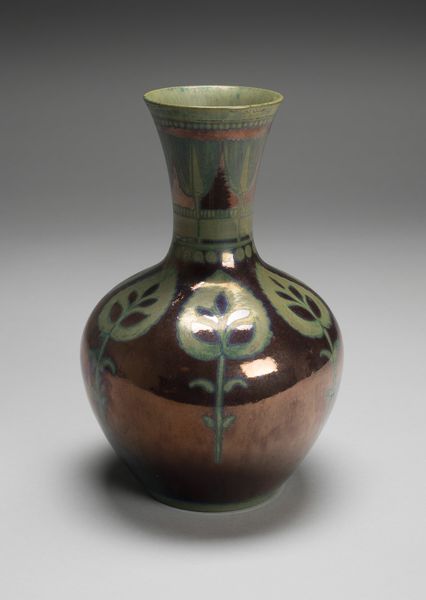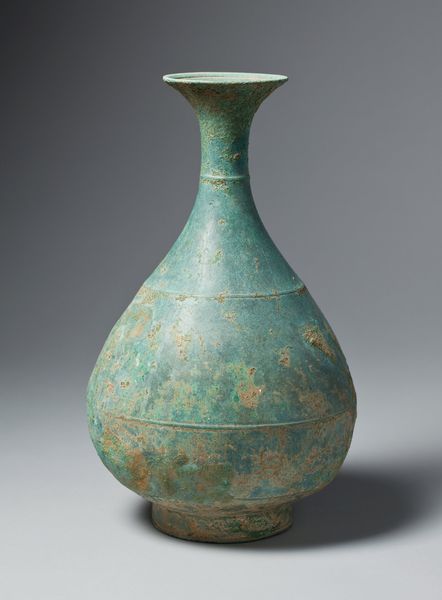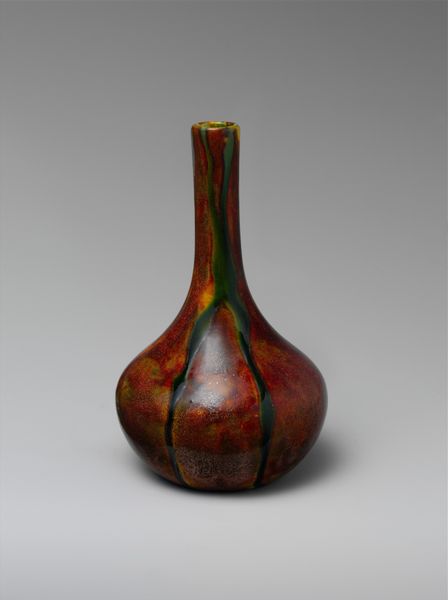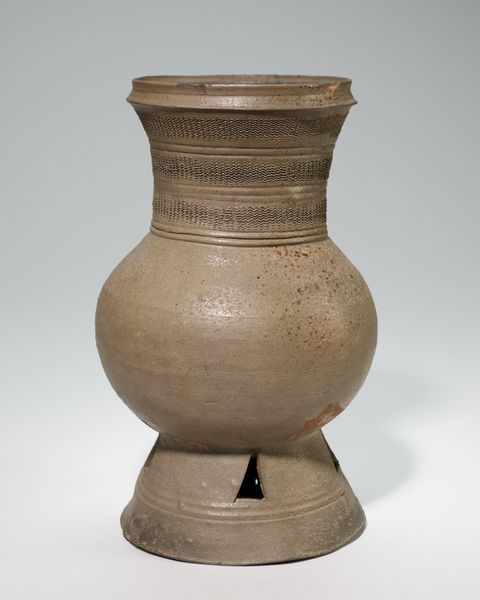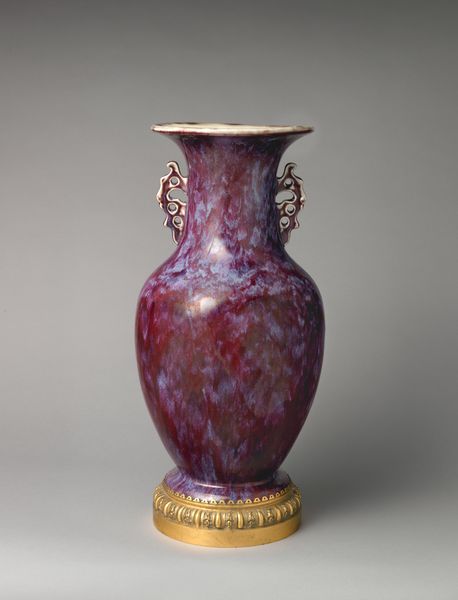
glass, sculpture
#
art-nouveau
#
form
#
glass
#
sculpture
#
decorative-art
Dimensions: 16 1/4 x 7 3/4 x 7 3/4 in. (41.3 x 19.69 x 19.69 cm)
Copyright: No Known Copyright
Curator: Let's talk about this "Vase," crafted sometime after 1905. It's attributed to Frederick Carder. It sits here in the Minneapolis Institute of Art. Editor: It has this lovely iridescent glow, almost like it's lit from within. Very classical form, simple, yet commanding. What exactly is it made of? Curator: It's glass, though Carder experimented with all sorts of glassmaking techniques. His output ranged from practical pieces to decorative objects that pushed the boundaries of design. Here, with that shimmering finish, we can really see Carder's love for experimenting. The shape itself almost fades behind the coloring. Editor: Exactly. And the Art Nouveau movement at the time was also interested in ideas about light, and with a goal to escape industrial dreariness. There is this idea of democratizing beauty that comes to mind. Bringing fine art into domestic settings, allowing individuals to experience luxury in the home, wouldn't you agree? Curator: Oh, absolutely. Carder wanted beauty available to everyone, not just the wealthy. He really tried to marry function and aesthetics, making objects that were both beautiful and practical. Which is a tall order. Sometimes I feel my art is a practical aesthetic *fail*. Editor: I think it speaks to shifting class structures and new consumer desires at the time. Objects were seen as reflective of social aspirations and the individual’s sense of style and sophistication. The iridescent coating really gives it this ephemeral, otherworldly feel, like a dream caught in glass. How do you see it playing into the themes of decorative art more broadly? Curator: It really highlights the artistry inherent in the craft, doesn’t it? It's this celebration of materials and skilled handiwork. Carder transforms humble glass into an object of beauty, pushing it beyond mere function. Also, that Art Nouveau whiplash is implied but under control here. It makes me want to start blowing glass immediately, but my attempts will surely look less intentional than this. Editor: Perhaps. Regardless, I think situating art within its broader cultural and economic context gives viewers another lens through which to better appreciate art. Curator: Definitely! It’s fascinating to think of this vase not just as an isolated piece, but as a mirror reflecting the values and aspirations of an era. Editor: Well said. Let's move on to the next piece, shall we?
Comments
No comments
Be the first to comment and join the conversation on the ultimate creative platform.

